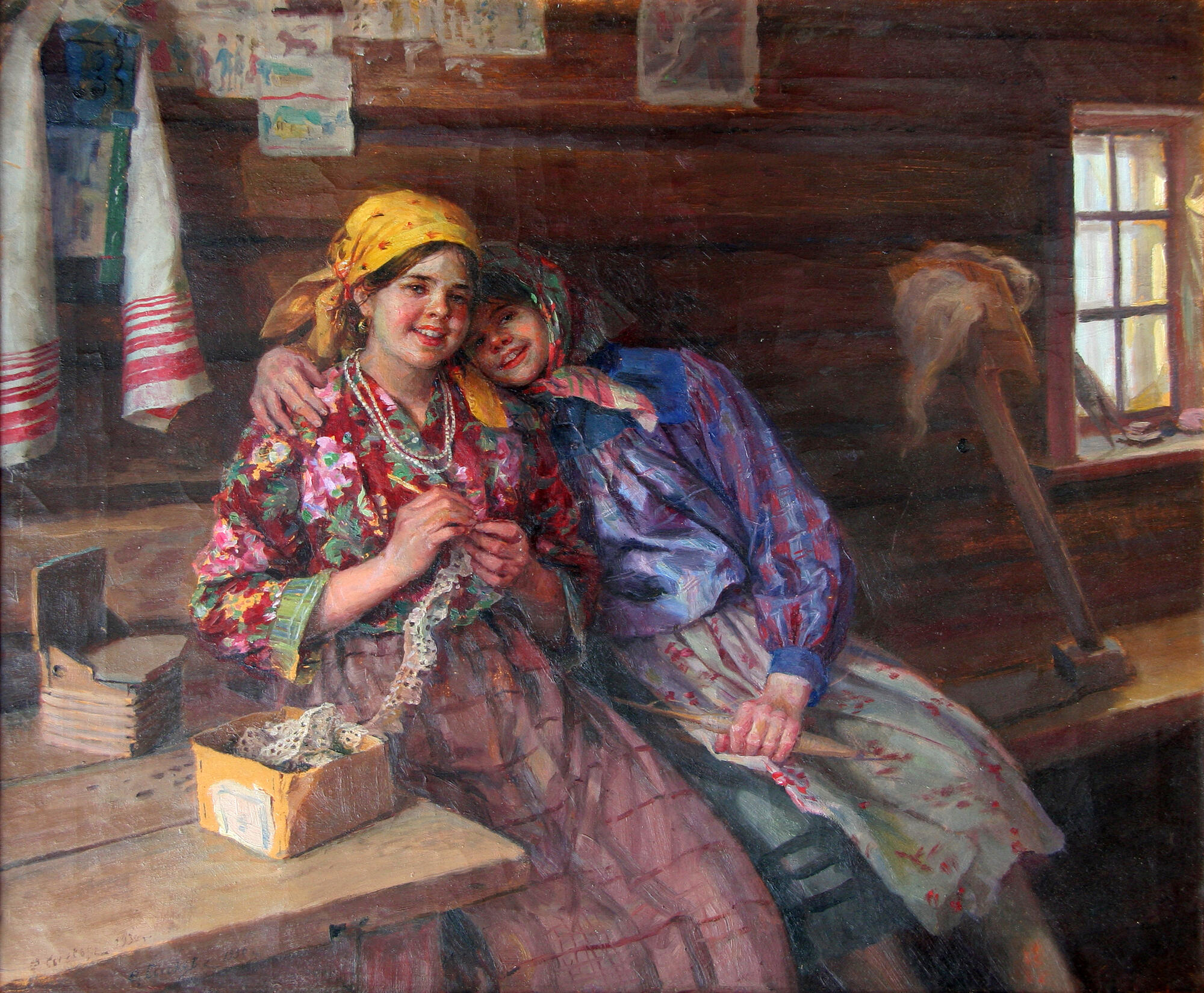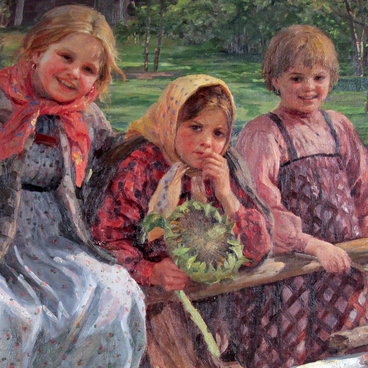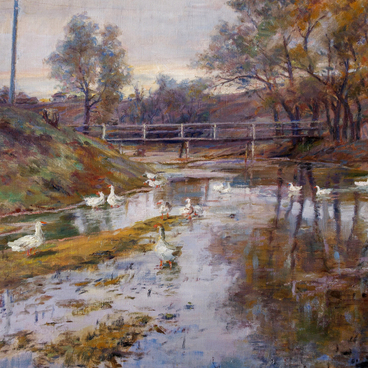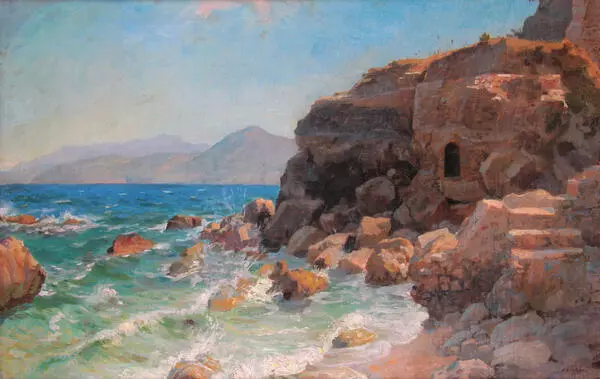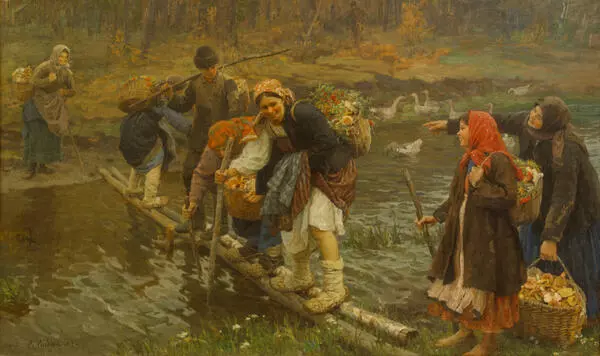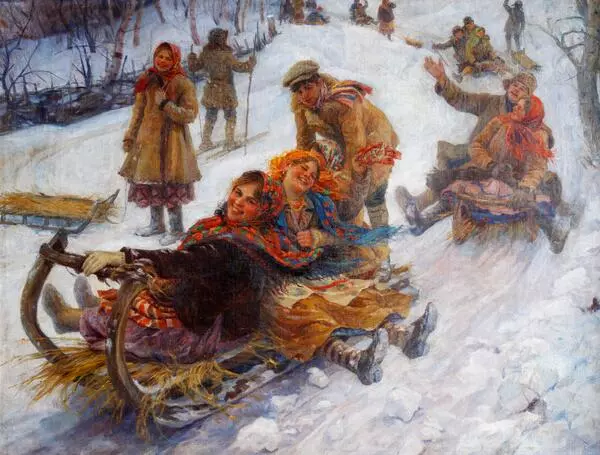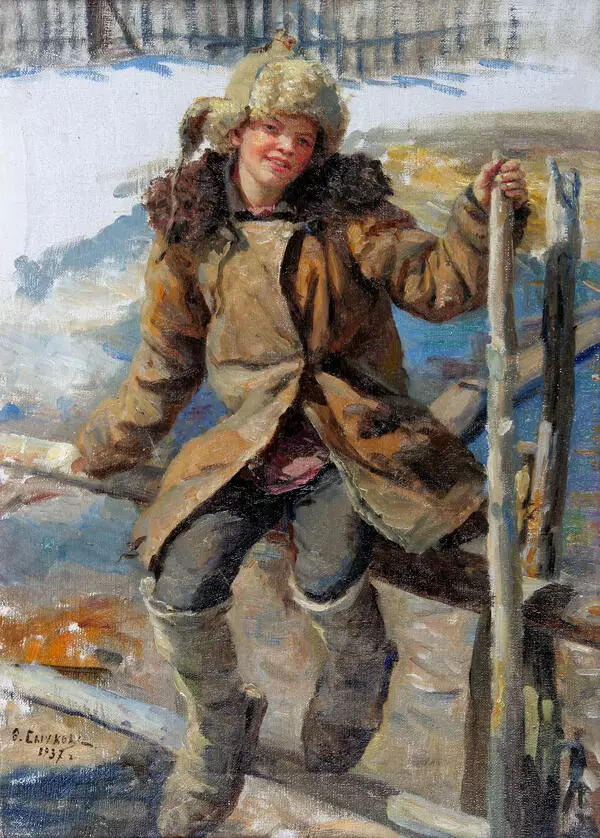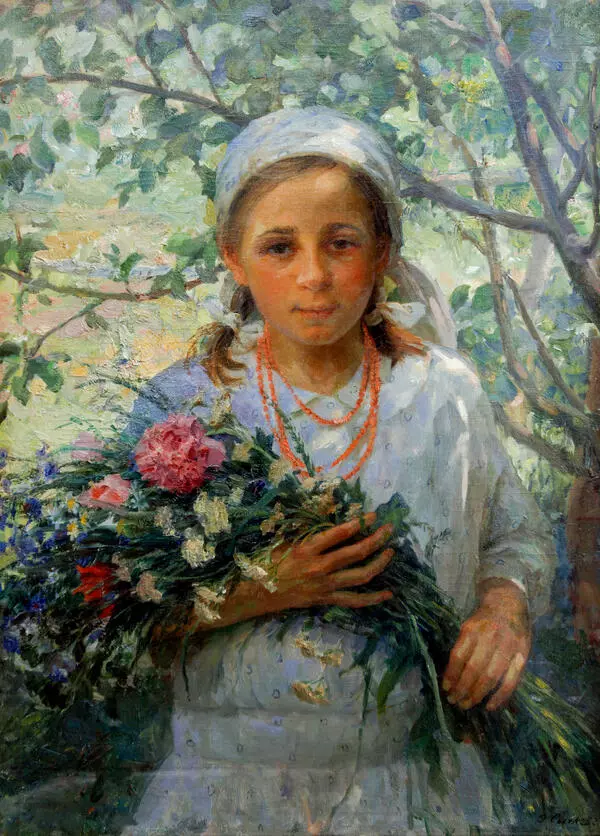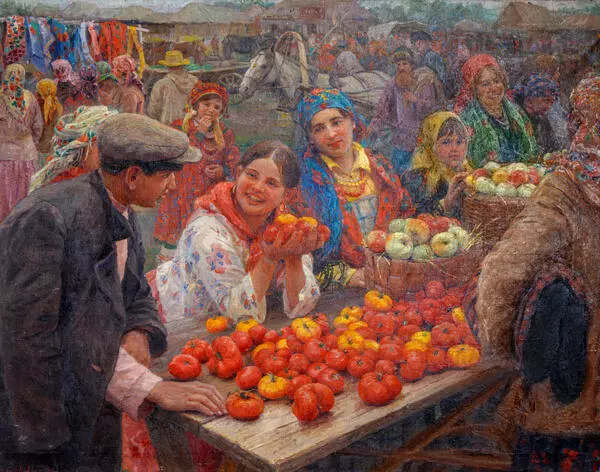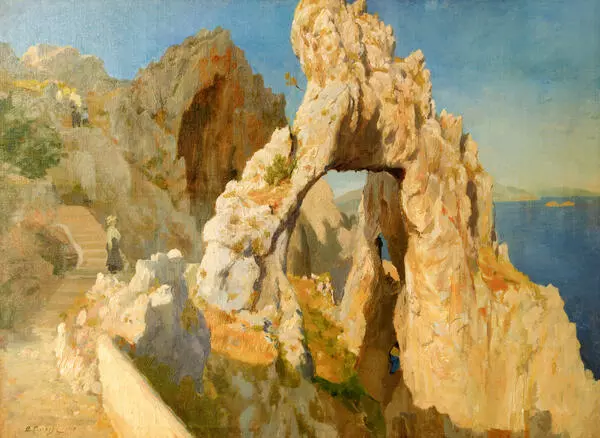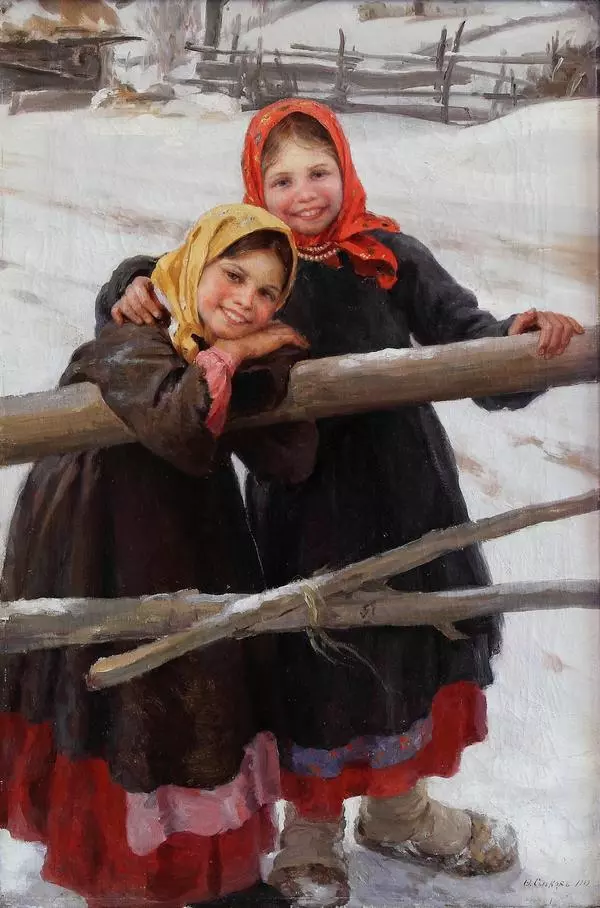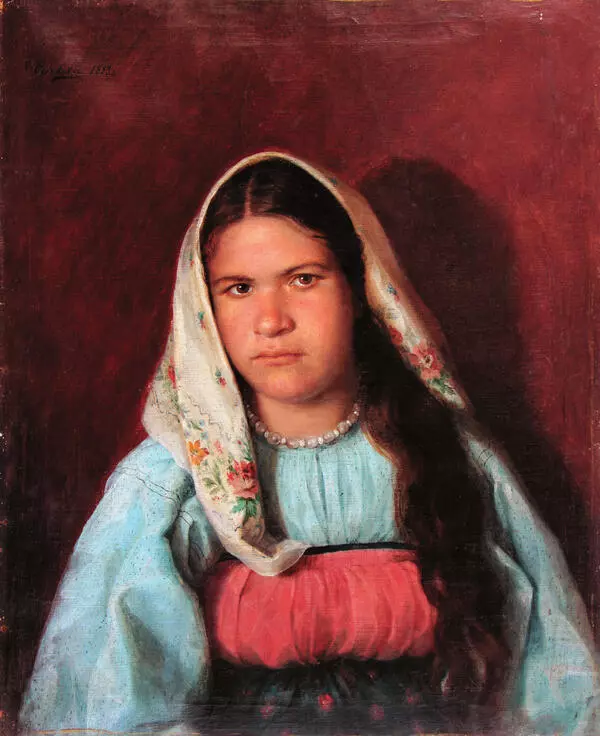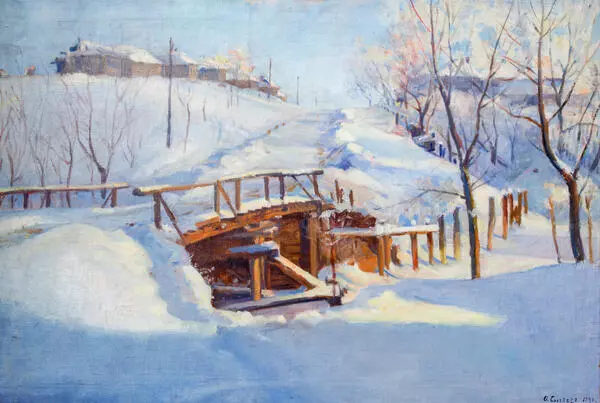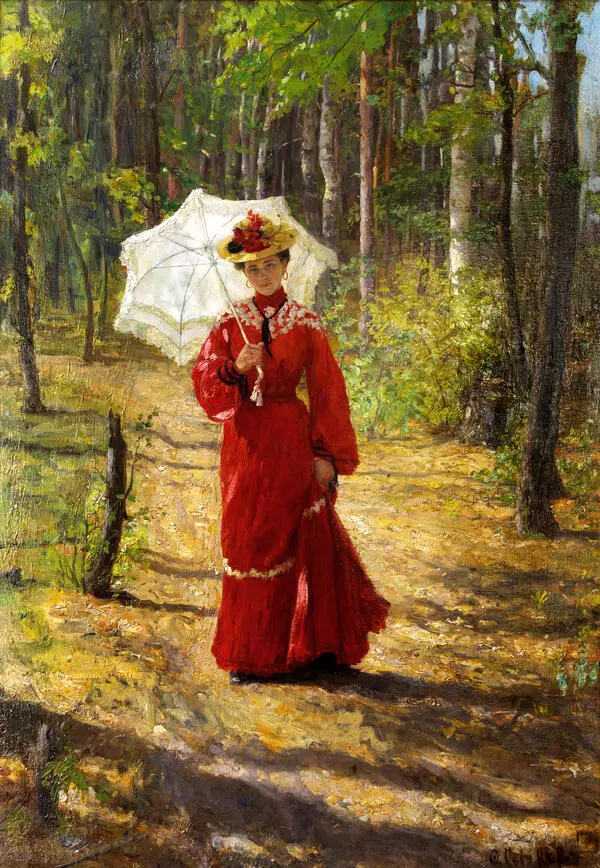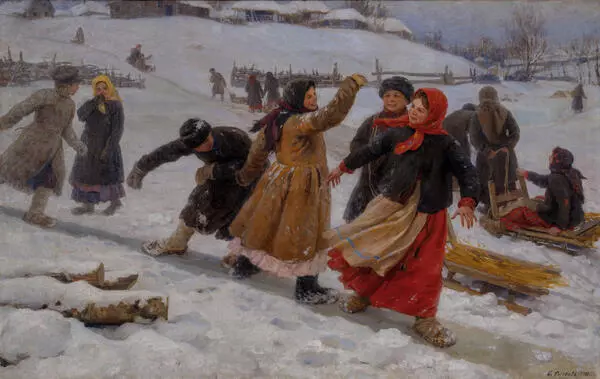The painter created a simple narrative with the rural girls, following the rules of his teacher Pavel Kovalevsky. He taught his students that the integrity of a painting should be achieved not by the formal techniques (for example, creating a composition using a triangle or an oval as a basis), but by reflecting the general mood of what is happening. In the painting ‘Girlfriends’, the painter achieved a sense of harmony in the composition by conveying the lively mood of the needlewomen.
Rural life has always been about hard work, leaving very little time for repose and fun. From an early age, the girls were taught needlework: spinning, weaving, embroidering, hand-knitting, and crocheting. Traditionally, needlework was done in winter and fall, after the work on the fields was over.
Both rural and urban fashionable women were especially fond of crocheted lace up to the 1960s. The Russian word ‘kruzhevo’ (‘lace’ in English) itself came from the word ‘okruzhat’ (‘to surround’ in English): it was lace that was used to ‘surround’ collars, hemlines, sleeves, tablecloths, towels. Women learned to knit traditional patterns, exchanged knitting patterns with each other, and the particularly inventive needlewomen came up with their own drawing schematics for knitting.
The Fedot Sychkov House Museum in Kochelayevo displays personal belongings of the spouses, among which is a fully crocheted snow-white bedspread. Its dimensions are 180 by 150 cm; it definitely demanded a truly long and painstaking effort. The museum also houses sheets with the letters ‘LVS’ embroidered in the corner — it stands for ‘Lydia Vasilyevna Sychkova’. These exhibits can be rightfully called works of art.
All residents of Kochelayevo knew of the talents of the painter’s wife: she ‘harmoniously’ dressed the rural models, Fedot Sychkov always asked her to help him. She recalled,
